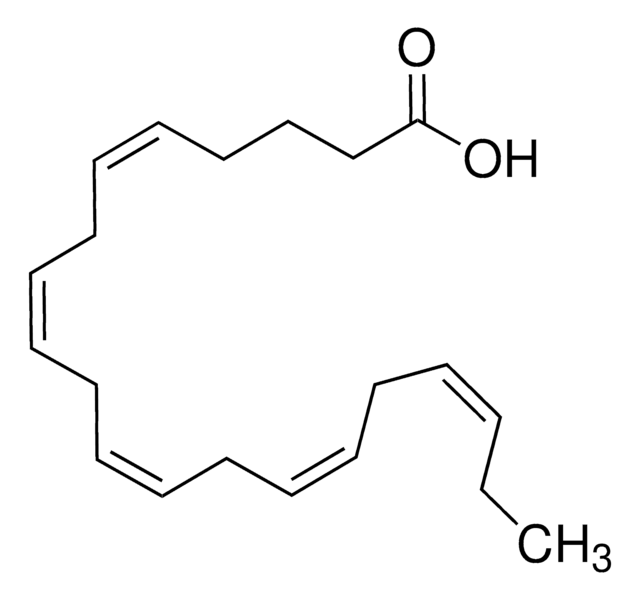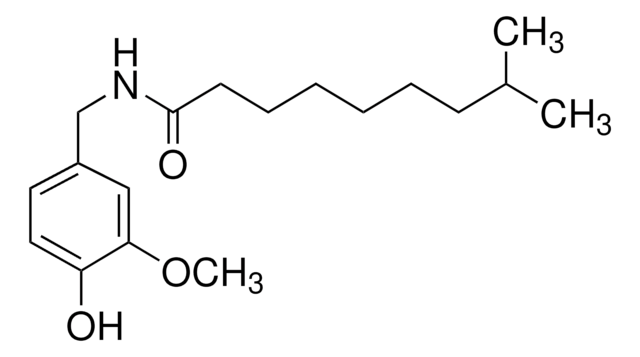E6627
cis-5,8,11,14,17-Eicosapentaenoic acid sodium salt
≥99% (capillary GC)
About This Item
Recommended Products
biological source
synthetic (organic)
Quality Level
assay
≥99% (capillary GC)
form
film or powder
color
white to off-white
solubility
methanol: 50 mg/mL, clear to slightly hazy, colorless to faintly yellow
shipped in
dry ice
storage temp.
−20°C
SMILES string
[Na].CC\C=C/C\C=C/C\C=C/C\C=C/C\C=C/CCCC(O)=O
InChI
1S/C20H30O2.Na.H/c1-2-3-4-5-6-7-8-9-10-11-12-13-14-15-16-17-18-19-20(21)22;;/h3-4,6-7,9-10,12-13,15-16H,2,5,8,11,14,17-19H2,1H3,(H,21,22);;/b4-3-,7-6-,10-9-,13-12-,16-15-;;
InChI key
TVEGTERCKGGVCJ-LIJGWLRISA-N
Gene Information
human ... ALOX5(240)
mouse ... ALOX5(11689)
rat ... ALOX5(25290)
Looking for similar products? Visit Product Comparison Guide
General description
Application
- to study its effect on the pathology of lupus in drug-induced and spontaneous mouse models
- to pretreat mouse alveolar macrophages to study the effect/relationship between amiodarone and eicosapentaenoic acid (EPA) concerning the cytokine release
- to examine if pharmacological correction with EPA supplementation might restore autophagic flux and reduce renal lipotoxicity in mice
Biochem/physiol Actions
Storage Class
11 - Combustible Solids
wgk_germany
WGK 3
flash_point_f
Not applicable
flash_point_c
Not applicable
ppe
Eyeshields, Gloves, type N95 (US)
Certificates of Analysis (COA)
Search for Certificates of Analysis (COA) by entering the products Lot/Batch Number. Lot and Batch Numbers can be found on a product’s label following the words ‘Lot’ or ‘Batch’.
Already Own This Product?
Find documentation for the products that you have recently purchased in the Document Library.
Customers Also Viewed
Articles
The potential for the prevention and treatment of cardiovascular disease through increased dietary intake of omega-3 (w-3) fish oils is not a recent scientific discovery.
Our team of scientists has experience in all areas of research including Life Science, Material Science, Chemical Synthesis, Chromatography, Analytical and many others.
Contact Technical Service









